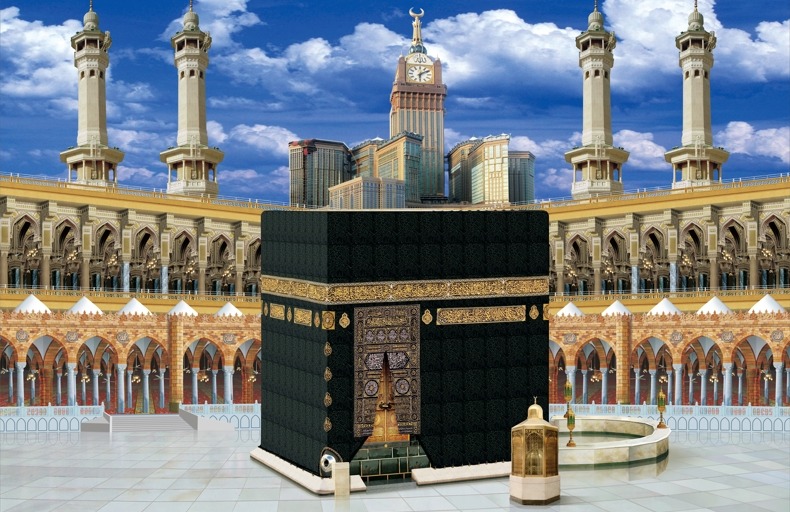As millions of Muslims around the world prepare their hearts for Hajj, understanding the significance of the Kaaba— one of Islam’s holiest sites—becomes more than just a history lesson.
It’s a way to connect spiritually and meaningfully with the rituals of pilgrimage. Every part of the Kaaba carries deep symbolic, historical, and spiritual meaning.
Here’s a guide to seven key parts of the Kaaba that every pilgrim should know before setting foot in its sacred courtyard.
1. The Black Stone (Al-Ḥajar al-Aswad)
The Black Stone is set in the southeastern corner of the Kaaba. It marks the point where Tawaf—the ritual of circling the Kaaba—begins and ends.
Positioned about 1.5 meters above the ground, this heavenly stone is black on the outside but originally descended from Paradise as white as milk. It turned dark over time due to the sins of humanity.
Surrounded by a silver frame for protection, the stone is said to have been delivered to Prophet Ibrahim by the Angel Jibril.
Though pilgrims strive to touch or kiss it, simply pointing toward it is enough during crowded times.
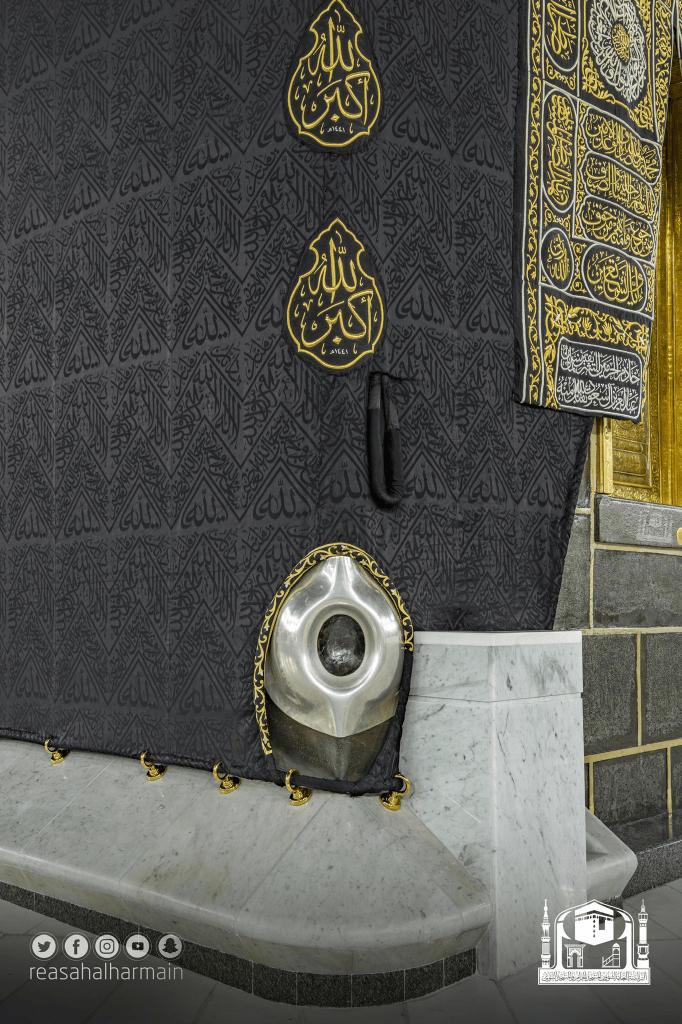

2. The Door of the Kaaba
The Kaaba’s door sits on the eastern wall and is raised above the ground to shield it from floods and intrusions.
The current door, installed in 1397 AH by order of King Khalid bin Abdulaziz, is made from 280 kilograms of nearly pure gold. It is considered the largest gold object in the world.
Adorned with Quranic verses, including powerful messages of mercy and forgiveness, it serves not just as a physical entrance, but as a spiritual threshold.
It’s sometimes referred to as Bab al-Rahmah, the Gate of Mercy. And at other times, Bab Alsalam, the Gate of Peace. Both names reflect their deep symbolic meaning.
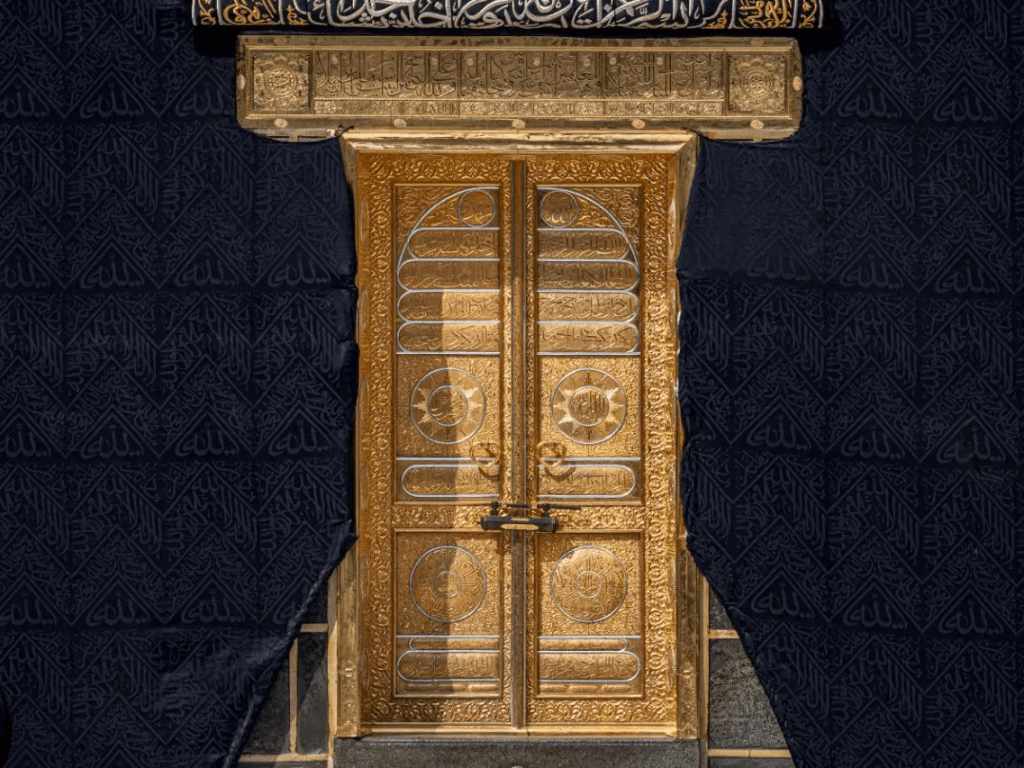

3. Meezab al-Rahmah (The Waterspout of Mercy)
This gold spout juts out from the roof of the Kaaba on the northern side. It channels rainwater and water from washing the roof down into the area known as Hijr Ismail.
It was first introduced during the Quraysh’s reconstruction of the Kaaba. However, the current version was crafted during the reign of Sultan Abdulmejid I in Constantinople and installed in 1276 AH (1859 CE).
Many pilgrims seek to stand beneath it, especially when it rains. That’s because it’s widely believed that prayers made there are accepted. And sins are wiped clean, leaving one as pure as the day they were born.
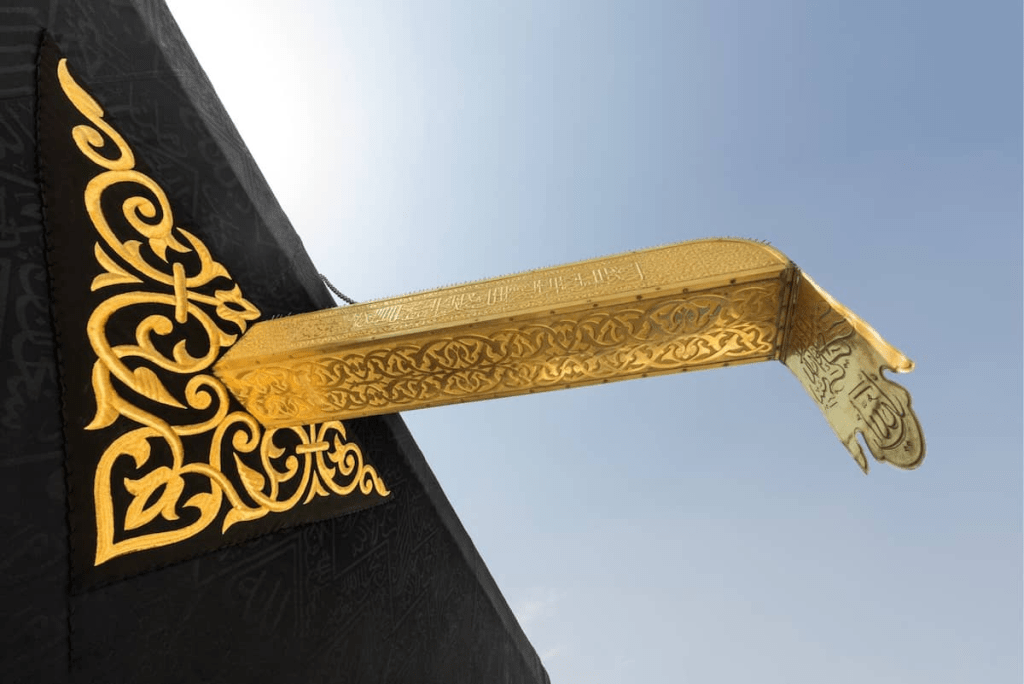

4. The Shadhrawan
The Shadhrawan is the slightly slanted marble base encircling the lower portion of the Kaaba. Designed to protect the structure from water damage and enhance its stability, it also holds deep historical value.
This section includes the Ma’jan, known as the “Claying Place”. It is where Prophet Ibrahim and his son Ismail are believed to have mixed the clay used to build the Kaaba.
It is also believed that the Shadhrawan is the only remaining part of the original wall’s foundation, where brown marble panels engraved with teachings on Wudhu (ablution) and Salah (prayer) are embedded.
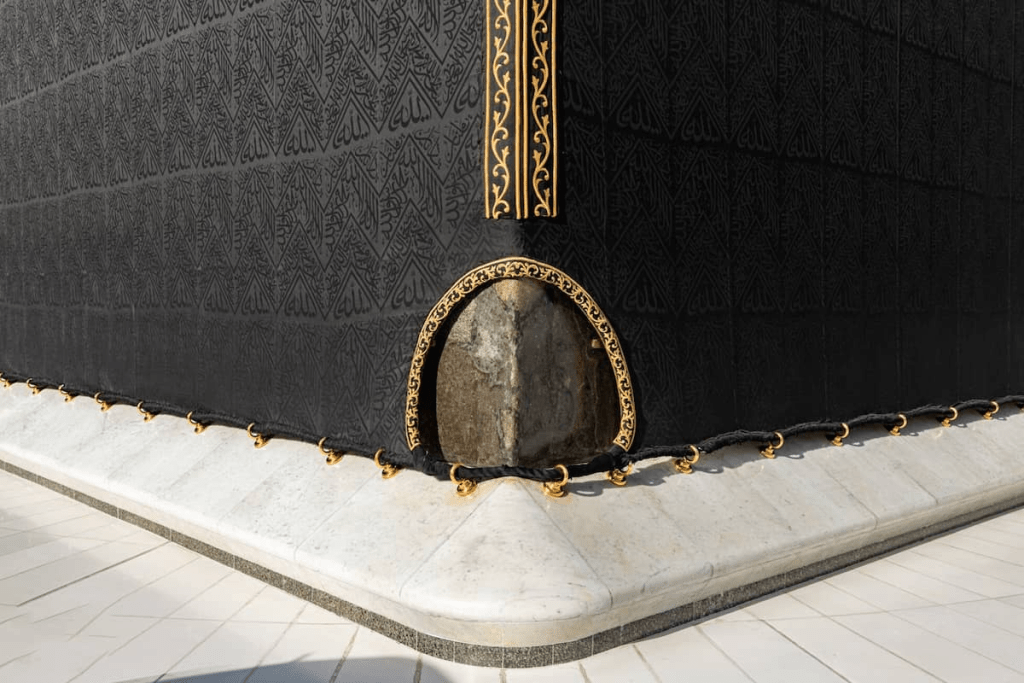

5. Maqam Ibrahim (The Station of Abraham)
Located about ten meters from the Kaaba’s door, this sacred stone bears the imprint of Prophet Ibrahim’s feet, left behind as he stood on it to build the Kaaba with his son Ismail.
As the structure rose, he used the stone to reach higher levels while Ismail handed him stones.
Over time, due to being touched and handled by countless pilgrims, the clarity of the footprints changed.
The Quran designates this stone as a place of prayer: “And take, [O Muhammad], from the standing place of Abraham a place of prayer.” (Surah Al-Baqarah 2:125).
Today, it sits under a glass and copper enclosure and is an integral part of the pilgrimage rites.


6. Al-Multazam
Al-Multazam is the area between the Black Stone and the Kaaba’s door, known as the “Place of Clinging.”
Pilgrims often press their faces, chests, and hands against it in a heartfelt act of devotion and supplication. It’s a Sunnah practice during Tawaf, if one is able, to seek forgiveness and pour out personal prayers in this sacred space. It’s believed to be one of the most blessed spots for having prayers answered.


7. Hijr Ismail (The Stone of Ismail)
Hijr Ismail is the semicircular white wall to the north of the Kaaba. Though it appears separate, it’s actually considered part of the Kaaba itself. As such, Tawaf must be done around it, not through it, to be valid.
It’s believed that Prophet Ismail and his mother, Hajar, are buried in this area. Praying within this space holds the same reward as praying inside the Kaaba, making it one of the most spiritually sought-after places within the Haram.
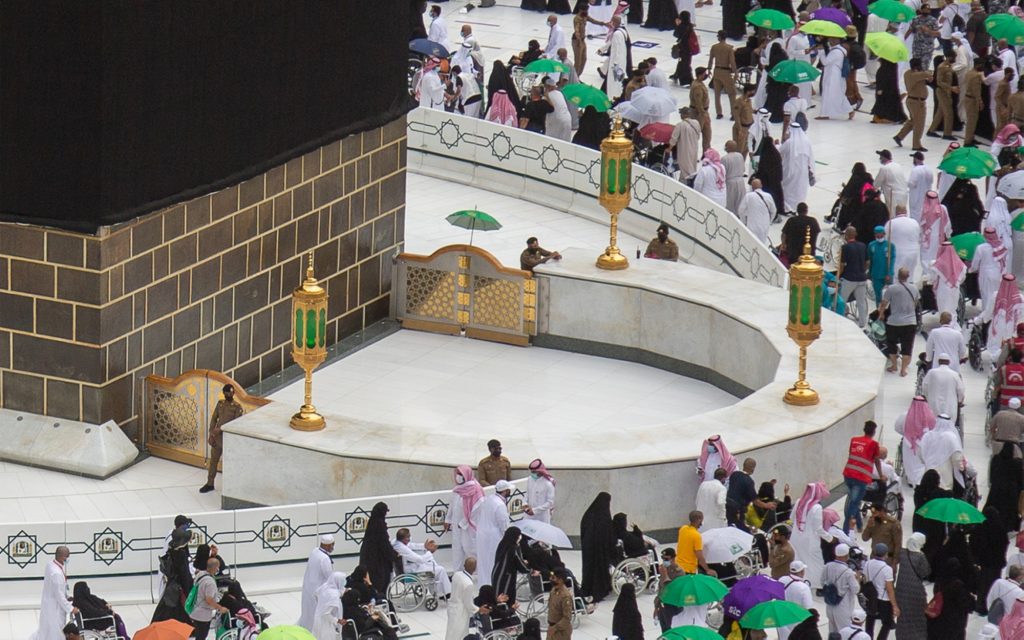

Visiting the Kaaba is not just about ritual. It’s about reverence, history, and understanding. Each element of the sacred structure holds a lesson from the lives of prophets, the mercy of Allah, and the unity of believers. Whether you’re heading to Hajj or simply reflecting from afar this season, may knowing these holy landmarks bring you closer to the spiritual beauty of the journey.
WE ALSO SAID: Don’t Miss…Safety or Restriction? The Debate Over Saudi Arabia’s Reported Hajj Child Ban


